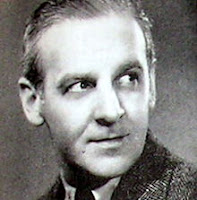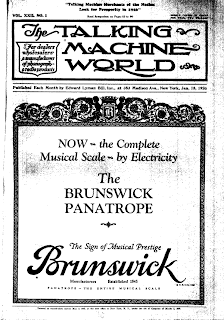Copyright Notice:
We do not own the copyrights to any of the shows available on this site. We believe that the copyrights have expired, or that the shows are in the public domain because they were never copyrighted. We do not sell the recordings or charge for access to our site. We are trying to bring the exciting world of Old Time Radio to a whole new generation of listeners using the new technology of the Internet. We are not trying to deprive the original creators of any money due to them, and we will remove any recording from our site that is shown to violate a copyright.
Below is some basic info on the copyrights for Old Time Radio Lover. I am not a lawyer, and the information contained in this page is not meant to be legal advice. It is just intented to give you an overview of the various copyright issues involved:
Length of copyrights:
http://www.unc.edu/~unclng/public-d.htm
General otr copyright info:
http://www22.brinkster.com/paradio/pages/lawj.htm
http://www.cni.org/Hforums/cni-copyright/swish.html (search for Old Radio)
OTR Sites:
http://www.spinsmart.com
http://www.old-time.com/toc.html
http://dir.yahoo.com/News_and_Media/Radio/History/Old_Time_Radio/
http://www.radiospirits.com
The following are some arguements showing Old Time Radio Shows are not covered by any copyrights:
From the site at:
http://www.oldtimeradioprograms.com/copyrite.htm
“we have checked with the Library of Congress regarding the status of old time radio recordings made prior to 1978, and have been informed by their staff that all such recordings are generally in the public domain, as sound recordings were not allowed under the previous copyright law and that such recordings have not been granted copyright status under the new laws (since to change their status and move them out of the Public Domain would be a violation of Ex-Post-Facto). Once a piece is placed into the public domain for any reason, it remains there legally unless someone brings a case to the Supreme Court to decide otherwise.”
From the site at:
http://www22.brinkster.com/paradio/pages/flip.htm
Library of Congress statements that the original recordings presented here are within the Public Domain, since they were NOT qualified for copyright protection when presented, nor was any attempt to place them under such copyright protection was made when the window of opportunity for such existed in 1978-1979 when the copyright law regarding such recordings changed. (Such had to be submitted to the Congressional Record for reinstatement at that time, and NO US Broadcasts from the 1929 thru 1950 period was filed for at that time in the Congressional Record – only a few foreign language audio recordings were so filed for in that period, none of which are here in our Library Collection.
Many people feel that the old time radio trademarks are abandonded since they were never enforced and are virtually worthless: http://www22.brinkster.com/paradio/pages1/abandon.htm
Any lawsuit for copyright infringement needs to be brought about by the real parties in interest (the actual copyright holder or assignee), not somebody else on their behelf. Without a federally registered copyright (which automatically would carry a presumption of validity), the burden of proof is on the person bringing the lawsuit to prove that they own a valid copyright for the work.
Registration Issues: Although failure to register a copyright does not affect its validity, a copyright must be registered before an infringement action can be filed under current federal copyright law. Registration must be made within three months after publication or before the occurrence of an infringement in order for statutory damages and attorney’s fees to be available to the plaintiff. Otherwise only actual damages may be awarded (17 USC §§ 411, 412).
Radio shows created before January 1, 1978 are protected by the Copyright Act of 1909 rather than the Copyright Act of 1976 ( http://www.copyright.gov/circs/circ1.html#hlc ) because according to case law any copyright determinations must be made according the copyright law as it existed before that date.
Assuming the old time radio shows were in the pbulic domain from from the Copyright Act of 1909, the update of 1976 could not suddenly place them under copyright because they were already in the public domain, and the status of a public domain work is not allowed to ever be reversed.
Steve Dhuey from University of Toledo College of Law wrote in to add the following thoughts on the topic:
Your page on copyrights seems to address only one type of copyright, federal statutory copyright. There is indeed good reason to believe that the old time radio recordings themselves are not under *federal* statutory copyright.
However, there are at least two other major types of copyright: state statutory copyright, and common law copyright. Neither of those types of copyright are addressed on that page:
* Under common law copyright, an unpublished work remained under copyright to its owner/creator in perpetuity.
* State statutory copyright, like federal statutory copyright, usually sets a limited term on a copyright.
U.S. Copyright Office Circular #56, “Copyright Registration for Sound Recordings,” says:
“Sound recordings fixed before February 15, 1972, were generally protected by common law or in some cases by statutes enacted in certain states but were not protected by federal copyright law. In 1971 Congress amended the copyright code to provide copyright protection for sound recordings fixed and first published with the statutory copyright notice on or after February 15, 1972. The 1976 Copyright Act, effective January 1, 1978, provides federal copyright protection for unpublished and published sound recordings fixed on or after February 15, 1972. Any rights or remedies under state law for sound recordings fixed before February 15, 1972, are not annulled or limited by the 1976 Copyright Act until February 15, 2047.”
http://www.copyright.gov/circs/circ56.html
Thus, sound recordings made before Feb. 15, 1972, are not protected by federal copyright, but they may still be protected by state copyright, or by common law copyright.
That addresses the issue of the sound recordings themslves. But there is another issue: the copyright of the scripts used on old time radio shows. These scripts were almost all written as works for hire, with the copyrights belonging to the network or the sponsor. The copyrights of these scripts are separate from the copyright of the sound recordings; one can be in the public domain while the other is still under copyright.
Almost all radio scripts would be legally considered unpublished works (broadcast or performance does not constitute publication), because very few old time radio broadcasts have been published by the copyright owners. If the scripts were unpublished, and not registered for copyright as unpublished works, they were under common law copyright, i.e., in perpetuity. The Copyright Act of 1976, effective 1978, changed that. It abolished common law copyright in the U.S. (except for sound recordings) and said that all unpublished, unregistered works existing as of Jan. 1, 1978, had a federal statutory copyright, lasting 120 years from the date of creation.
Thus, even though the *recordings* of the old time radio broadcasts are not under federal statutory copyright, the *scripts* underlying most of those broadcasts are under federal statutory copyright for 120 years from creation.
There is a third layer of copyright involved, if the script is based on another literary work, for example, a short story, play, or motion picture screenplay. Even if the sound recording had no copyright, and the radio script had no copyright, the copyright of the underlying literary property may be in effect and enforceable.
In summary, the copyright situation is more complex than the simple question of whether the old time radio recordings are under federal statutory copyright. There are also issues of common law copyright and state statutory copyright, and the underlying literary copyrights of the scripts.






















